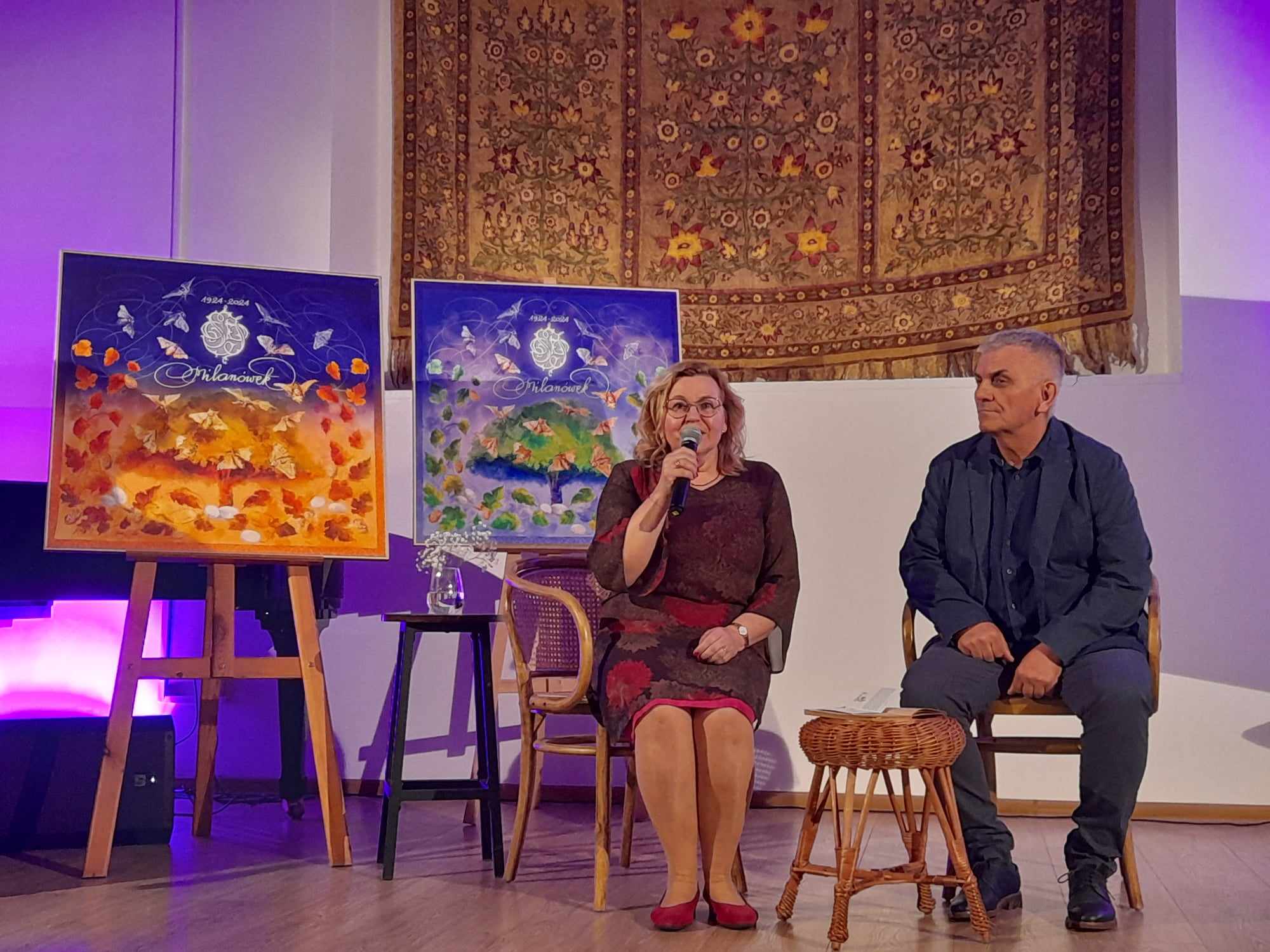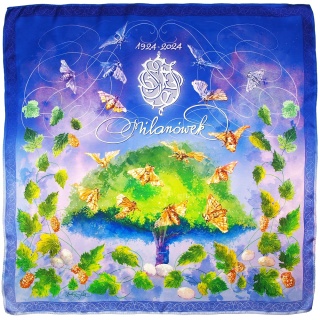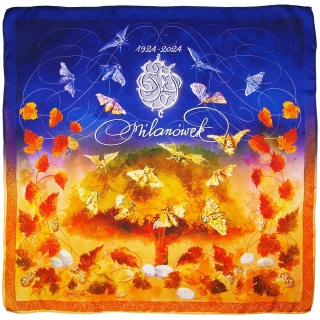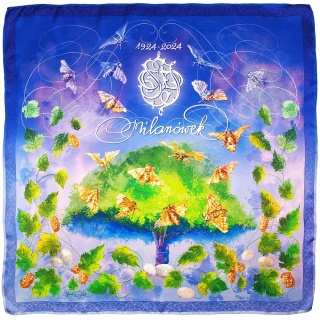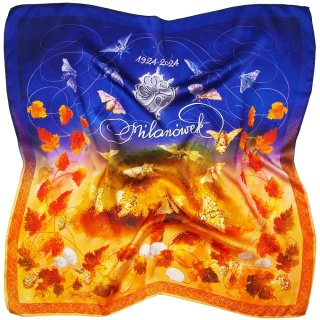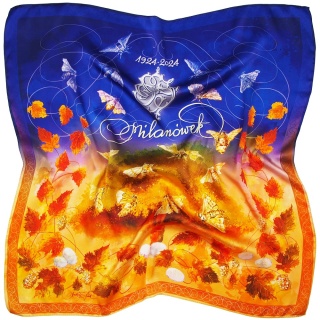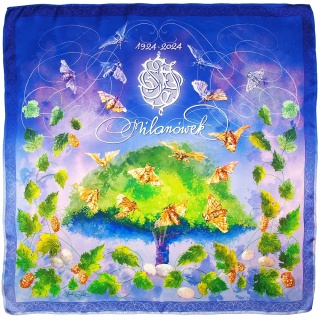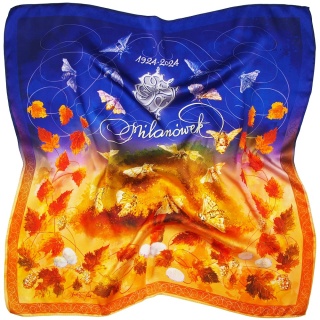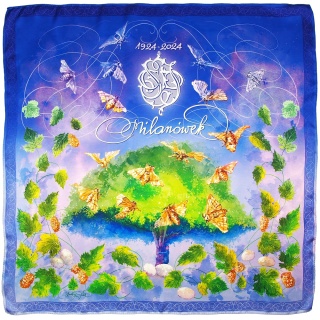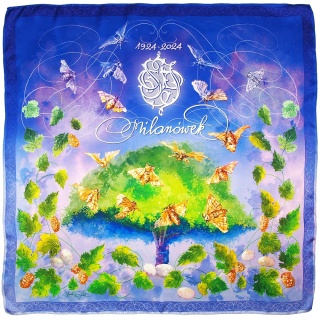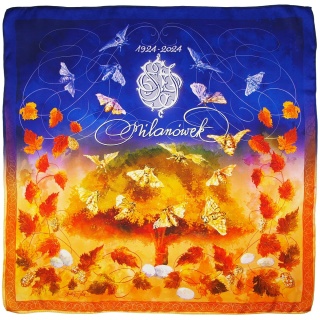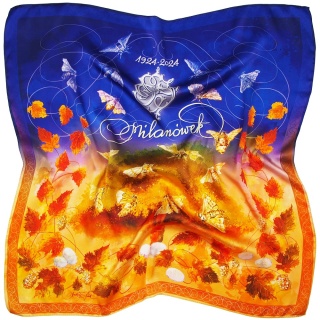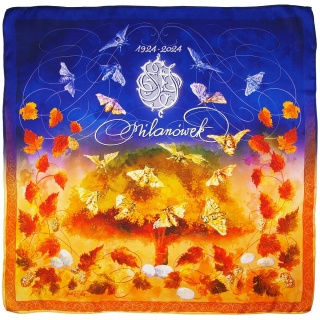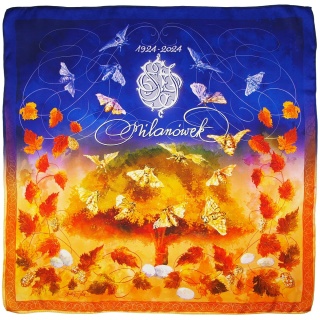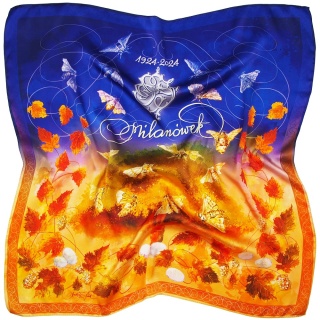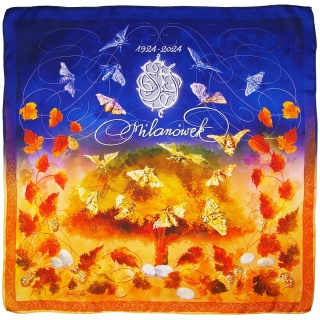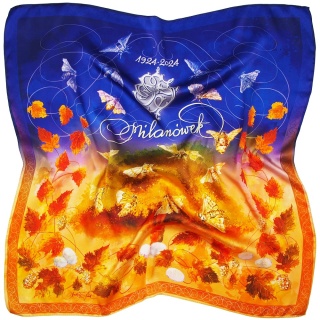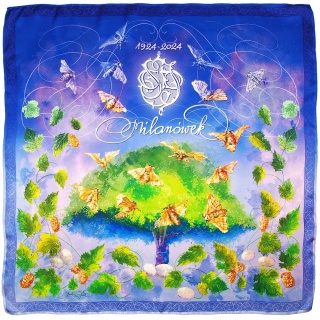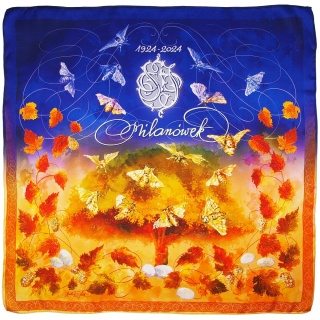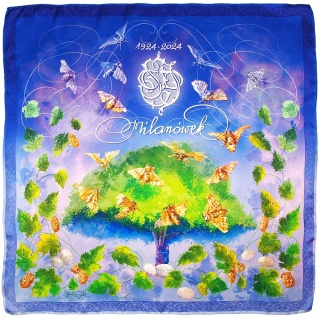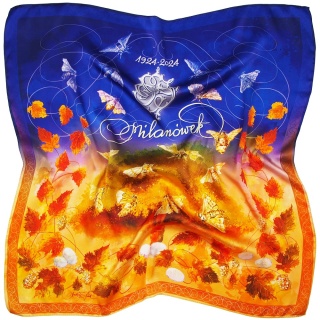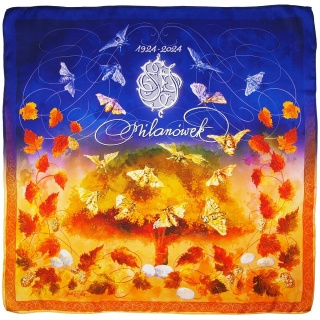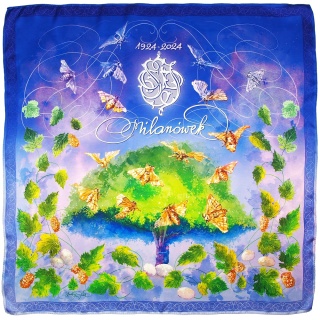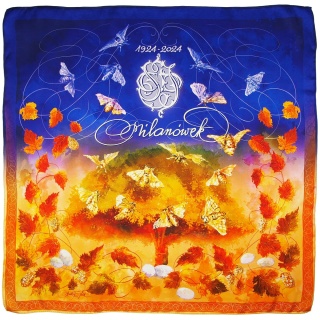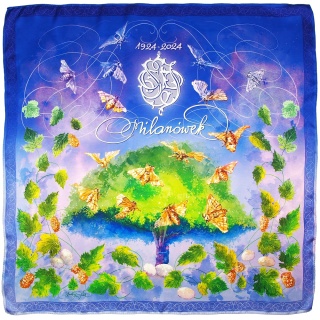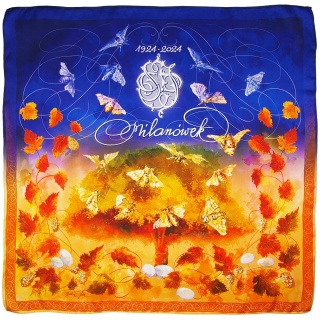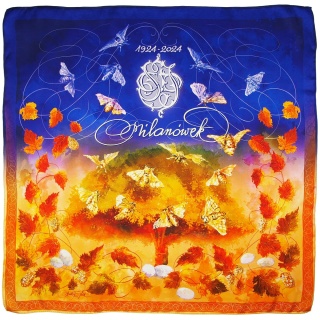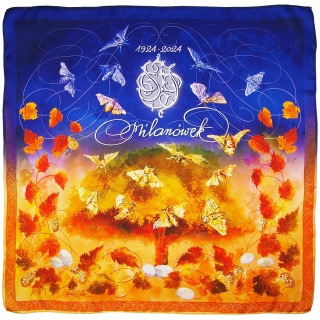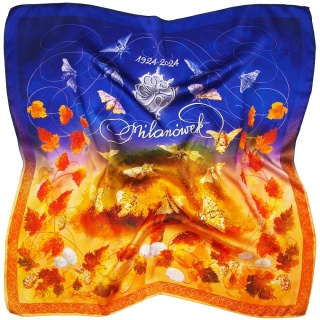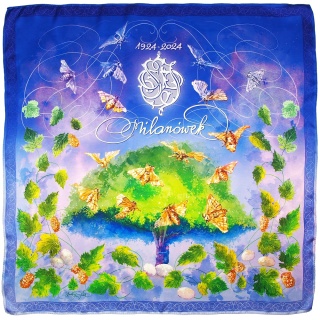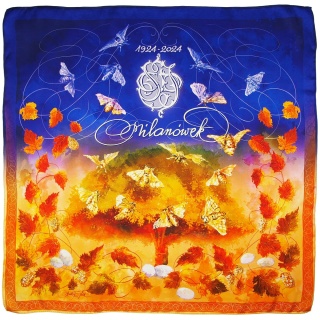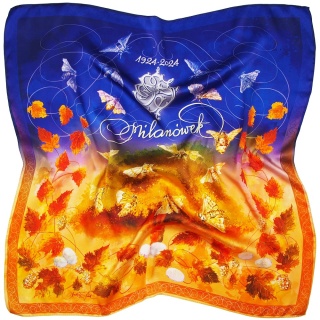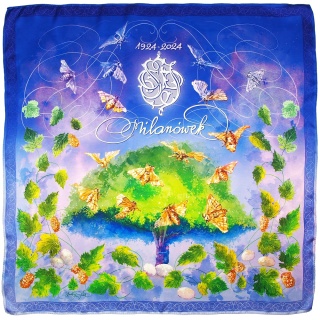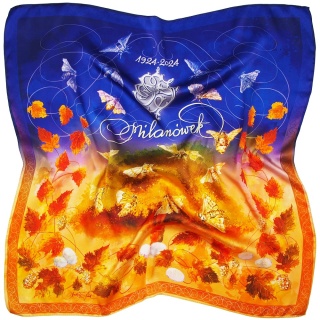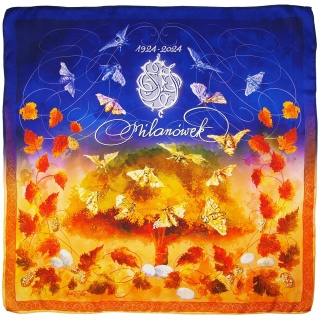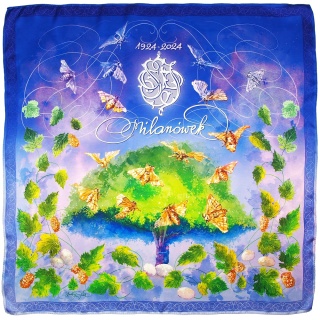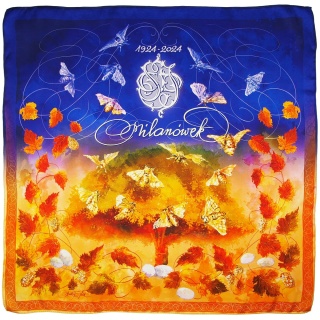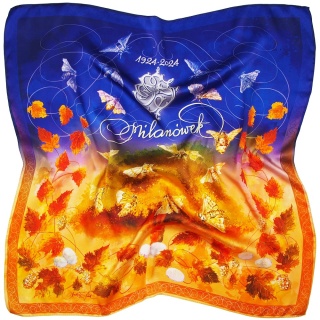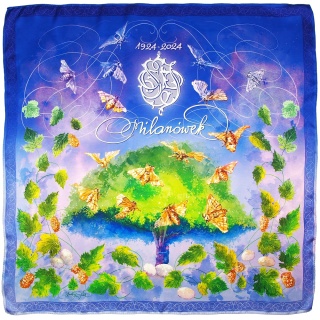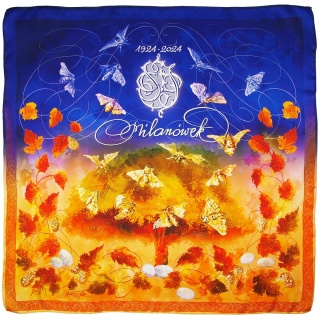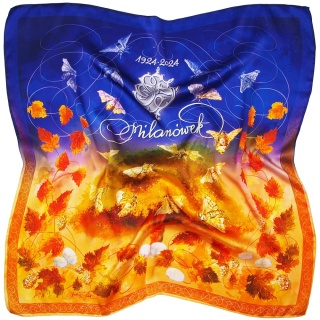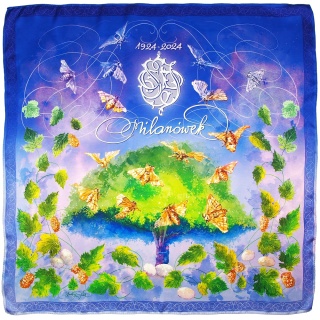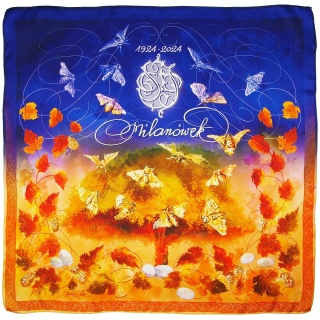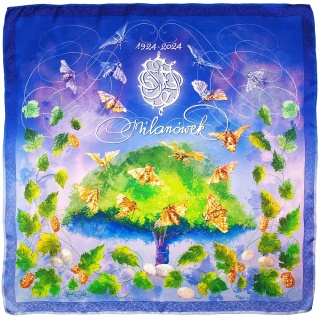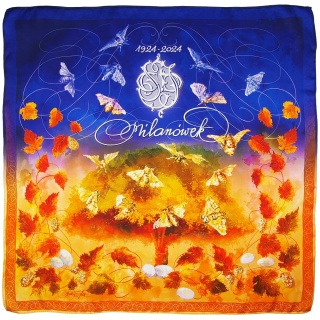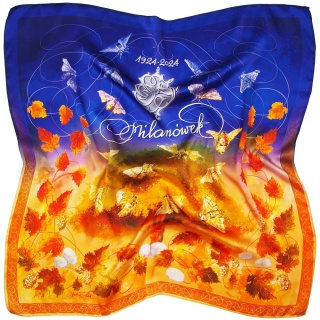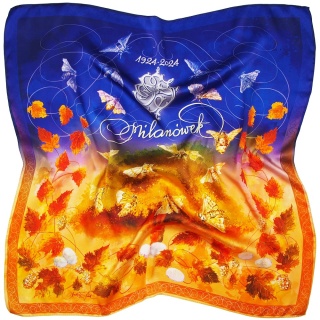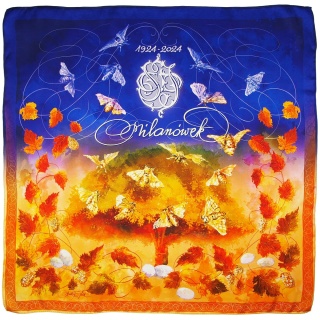Collection for the 100th anniversary of Silk
Number of products : 51 1924-2024 Centenary of the Milanese silk industry
1924-2024 Centenary of the Milanese silk industry
We would like to thank Mrs. Honorata Kuraszkiewicz for her huge contribution to the creation of this collection. Thank you for cultivating local silk traditions like no other Milanese. Her idea to create a silk scarf for the centenary of the Milanese silk industry resulted in the creation of the entire Jubilee Collection, which is a tribute to the rich history of our city. Thanks to Mr. Honorat, the silk traditions of Milanówek come alive and nourish the hearts of younger generations. Her commitment and work in local culture and crafts deserve special recognition. The fruit sown with love grows just as Mr. Honorata's ingenuity inspires further exploration and creative expression of Milanese traditions in a modern way.
Thank you, Łukasz Łumiński and the Luma Milanówek team
Dreams of silk
“A long, wide avenue, lined with mighty, tall mulberry trees, at the end of which a fairy-tale palace glows dazzling white in the midday sun of Tiflis. This is how he saw it for the first time and how delighted the scout Henryk, who set out to look for a gift for his distant homeland. Brother Mularski's words were still ringing in his ears: 'Remember, you must not return to Poland empty-handed. Everyone must bring her as a gift whatever is most precious to her.” He was sure that he would find this gift, unknown yet, but valuable, because without it he would not return. And they are waiting for him there! … He felt small and helpless in front of these twenty-meter tall giants who showed him the way with two straight rows. He embraced the nearest dark gray, cracked trunk. Well, with his outstretched arms he was hugging half of the stately tree. The old man suddenly woke up: the trees were planted with a clear sense of humor in turns - morus nigra, morus alba and again nigra and alba... Up to the palace. … In the white palace, surrounded by a low mulberry hedge, in the palace where the Georgian Silk Station was located, the scout Henry, after graduating from high school, worked for two years as a worker, wandering around all departments to learn the beautiful art of silk. He confided to his Georgian friends that he wanted to bring back to his homeland the secrets of their art, which Staszic had already dreamed of! …. So Poland dreamed of silk! Henryk Witaczek, a young accidental evacuee from the First World War, decided that he would fulfill this centuries-old dream.
Excerpt from the book "Baba z Wozu" by Joanna Gorczycka

Blooming time
After returning to the country in 1921, Henryk Witaczek, studying law at the University of Warsaw, simultaneously researched the possibilities of introducing the silk industry in the country and the ways in which it was developing in the world, and tried to interest the Ministry of Agriculture and later social agricultural organizations in silk matters. However, having encountered disbelief and underestimation of these possibilities, and even very sharp criticism, he wanted to prove the validity of his idea in which he believed and decided to put all his efforts into implementing it himself. In 1924, believing in the potential of his idea, which could not be realized with government support, Henryk Witaczek, together with his sister Stanisława, created the Central Experimental Silk Station in Milanówek. This initiative was the foundation for the development of a new industry sector related to silk. CDSJ's activities were aimed at promoting silkworm breeding and silk processing, which was important for the local economy and the future of the silk industry in Poland. The Witaczek's determination and incredible passion led to the development of technology and production methods that contributed to significant achievements in textile production. CDSJ's textile production during this period focused on producing a wide range of silk fabrics. Virtually all classic types of silk fabrics were produced: grey-gray canvas, smooth and patterned taffeta, crepe and fancy dress fabrics. High quality parachute fabrics were also an important element of the offer. As the company developed, it started producing decorative, upholstery, historical and banner fabrics. In addition to the fabrics themselves, CDSJ has developed new methods of producing sewing and embroidery threads, decorative fabrics, parachute cords, surgical threads and insulating yarns. Products from Milanówek were appreciated both in Poland and abroad. They were exhibited at numerous exhibitions and exported to England and Sweden.
.jpg)
Siblings - Henryk i Stanisława Witaczek fot.: https://www.obiektywna.pl/Milanowek/rodzina-witaczkow3
Martial law
On September 1, 1939, martial law was introduced throughout the entire Polish state. Henryk Witaczek, fearing that the Germans would use his facility to produce silk fabrics for military purposes, quickly dismantled the entire factory, leaving only the weaving looms and the plant for weaving artificial silk from raw material imported from Chodaków. He hid the raw material of real silk from the Germans. During the war, Henryk Witaczek continued his action to develop silkworm breeding in the so-called General Governorate. At the same time, the Central Experimental Silk Station was a refuge for hundreds of people, mainly young people, trying to avoid deportation. Henryk Witaczek was involved in charity activities, helping people displaced from Pomerania and the Poznań Voivodeship. His initiatives included providing housing, clothing and jobs to people in difficult situations. After the Warsaw Uprising, the charity campaign became more intense, which resulted in the establishment of a special sewing room where clothes and quilts were produced. Witaczek also organized shelters and soup kitchens for those in need. As part of these activities, Fr. was admitted to the House. Boduena as many as 600 people. His actions were of great importance in rebuilding the community after the war.
Release
After liberation, CDSJ became part of the state structure. Henryk Witaczek, as the newly appointed general director, had a huge impact on the modernization and reconstruction of silk factories. Thanks to his vision and determination, a number of reforms were initiated that allowed the introduction of modern technologies in the silk production process. Witaczek focused on improving the conditions for breeding silkworms, which resulted in an increase in their population and productivity. As part of the revitalization, the plant underwent a thorough reorganization, including the modernization of infrastructure and the implementation of new production methods. Witaczek became a key figure in the Polish silk industry, and his achievements had far-reaching consequences for the entire economy of the region. Henryk Witaczek, transferred to the position of director of the State Silk Institute, had a short term of office as he was soon dismissed from his position. Henryk Witaczek commented on this fact in his biography: "Being dismissed from the plants that I had created and in which I had worked with full dedication during the last 4 years after the war, without giving any reasons, I was suddenly separated from the work to which I had devoted my whole life."
Silk is eternal
Although this is not the end of the activity of the Silk Factory and the silk industry in Milanówek, the memory of Stanisław and Henryk Witaczek, who inspired themselves and others to the idea of introducing the silk industry in our country, is still alive. They did a lot by spreading their idea, giving additional income to silkworm breeders, teaching others the entire process of obtaining ready-made materials and various other products from silk. And their main contribution was to show people beautiful things, because they were made of silk.
We are giving you something beautiful, because it is silk!

